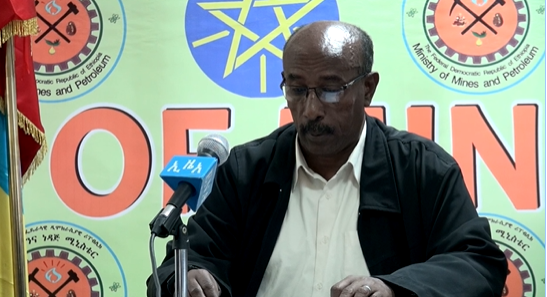Ethiopia’s Coal Production to Hold Cost Saving on Foreign Currency - ENA English
Ethiopia’s Coal Production to Hold Cost Saving on Foreign Currency

Addis Ababa October 2 /2019 Coal production at the national level will help to recover costs incurred in foreign currency expenditure on the mineral beyond encouraging investors to the energy sector, according to Ministry of Mines and Petroleum.
In its 73rd regular session, Council of Ministers has approved a regulation on issuance of license for coal and chromites mining on August 24, 2019 to promote investments in mining industry.
Case Team Coordinator for Mineral Licensing at the Ministry of Mines and Petroleum, Leul Gebre, told ENA that the government has been taking various measures to encourage investments in coal, it was learned.
Amending energy proclamation and licensing potential companies who wish to invest in the sector are some of the measures that Ethiopia has taken in mining industry, he indicated.
He pointed out that Ethiopia’s potential in coal deposits have already been studied and identified in Amhara, Oromia and Southern Nations, Nationalities, and Peoples’ (SNNP) regional states.
According to the Geological Survey of Ethiopia, there are 17 main locations in which potential coal resources have been identified which amounts over 360 million tons of coal.
Ethiopia imports coal to facilitate the energy sector, Leul said, adding that the production of the mineral will help the country to use its potential as a substitute for large amount of coal imported with large foreign currency spending.
“If we use coal it would be economical as the cost is cheap and is portable. Many of our cement factories import coal from South Africa which inflates the cost on the cement production,” he stated.
Cheaper cost of production, the possibility to create more jobs and easier transportation and as a replacement of imports by hard earned foreign currency gives the country a comparative advantage to produce coal at the national level, Leul noted.
Communication Director at the Geological Survey of Ethiopia, Tamru Mersha, said apart from its energy source, coal is also used as a raw material for the production of various industrial products.
He emphasized on the need to use this means of energy at this level and in progress to change it to other options.
He added, “Currently petroleum is imported by excessive subsidy to the country, this petroleum will also escalate sever emission to the environment however if we produces coal first we would be able to save the foreign currency.”
These coal based productions will lower the country foreign currency which the country uses to buy petroleum from abroad and attract more investors to the sector and benefit the population at potential areas.
Despite its crucial power source, coal being the main polluting fossil fuel in the energy sector while Ethiopia has pledged to cap 2030 greenhouse gas emissions at 145 MtCO2e, a 64 percent reduction from projected business as usual emission levels in 2030.
The pledge includes greenhouse gas reductions from agriculture, forestry, industry, transport and buildings sectors, however, coal contributes to pollution.
But, Leul asserted that professionals from the ministry assess the companies’ activity to protect the environment according to the agreement they have signed and would take measures on possible damages to the environment.
He said, “Whenever signs of pollution are identified in the areas, appropriate measures will be taken in fact compared to other countries there isn’t that much serious risk of pollution considering the level of the development of our country. Perhaps in the future there will be measurements that will be under taken when the production expands further.”
Ethiopia uses coal in its cement and textile factories by preserving heat at times of power interruption and to replace charcoal by coal (briquette) and for the production of fertilizers currently in Oromia region, he said.
Coal fossil fuel generates around 40 percent of the world's electricity and about 25 percent of the world's primary energy.